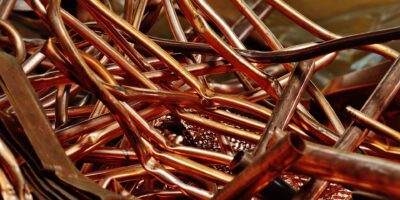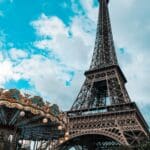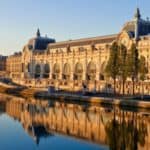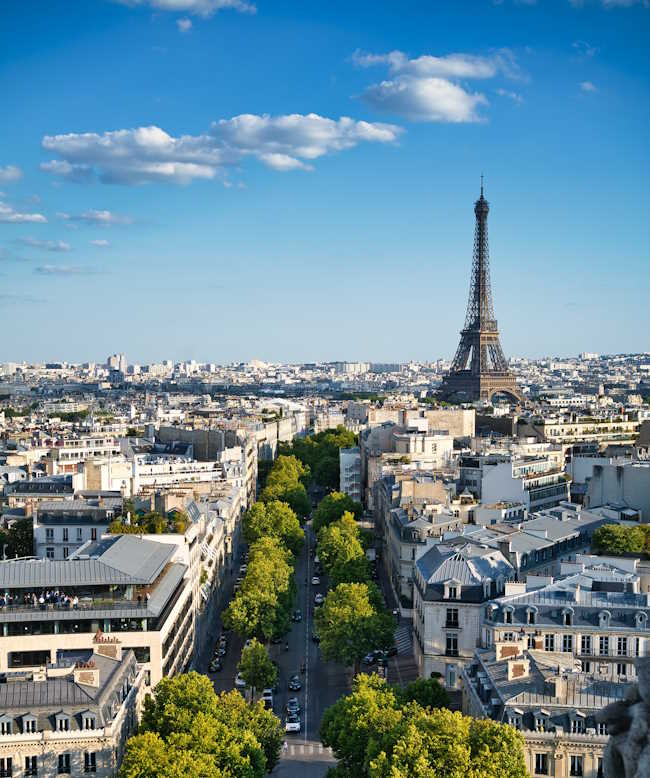Top 20 Interesting Facts About The Earth Crust
Originally Published by Nellian in April 2023 and Updated by Nellian in May 2024.
The Earth’s crust is a field day for scientific exploration. Besides, it is at the center of human activity because that is where daily life happens. Additionally, it has fun realities to unravel. It is planet Earth’s outmost, least dense, and thinnest layer.
To add on, the Earth’s crust has the coolest temperatures among all the other layers of the planet. The crust also triggers internal movements which change the landscape of the Earth’s surface resulting in natural features such as mountains, valleys, and escarpments. Discover more below.
Here are the Top 20 Fascinating Truths About The Earth Crust.
1. The Earth’s crust is the outmost layer

Rajneesh Kumar Thakur, CC BY-SA 4.0, via Wikimedia Commons
The planet Earth has three layers which are the core (outer and inner core), mantle, and crust. The inner core is mostly made up of metal alloys, especially iron, and nickel. The outer core consists of liquid or molten iron and nickel.
Moreover, the mantle consists of solid rocks which are mainly silicates (compounds with a silicon and oxygen structure). Thus the dominant rocks in the mantle are magnesium oxide, olivine, garnet, and pyroxene. Simply put, the crust is where everyday life happens.
Learn the Facts About The Earth’s Mantle.
2. The Earth’s crust consists of three types of rocks

Philtom12, CC BY-SA 4.0, via Wikimedia Commons
Igneous rocks make up a majority of the Earth’s crust. They are formed when magma cools and the main examples are granite and basalt. The other rocks are metamorphic, and sedimentary rocks.
Metamorphic rocks result from the subjection of rocks to high heat, high pressure, or hot mineral-rich fluids. Also, a combination of these factors can cause the formation of these rocks. To add on, sedimentary rocks are formed due to factors such as erosion, weathering, dissolution, precipitation, and more.
3. It’s the most explored layer of the Earth
The Earth’s crust is at the center of human activity. Through mining and drilling in search of resources, humankind has explored the Earth’s outermost surface throughout history. Scientific research is another reason for the extensive probe of the Earth’s crust.
4. The Earth’s crust keeps changing
This layer is always changing because it is affected by geological processes. They include erosion, tectonic processes, volcanic reactions, glaciation, earthquakes, Earth tides, and soil formation among others.
5. It’s also on the move

Jose F. Vigil. USGS, Public domain, via Wikimedia Commons
Scientists have established that the Earth’s crust and the upper mantle segment are broken into large rocky plates. They are known as tectonic plates and are positioned above the partially molten mantle. Though the mantle consists of solid rock, it is less viscous in some parts like at the boundaries of tectonic plates.
What’s more, these plates move due to radioactive processes that emerge from the Earth’s core. The plates either pull towards each other or away from each other causing a movement called plate tectonics. Thus responsible for volcanoes and earthquakes.
See the Fascinating Facts about Earthquakes.
6. It is the thinnest layer and varies by location

USGS and me. I made better labeling., CC0, via Wikimedia Commons
The crust is the thinnest of all the Earth’s layers. It is about 1% of the volume of the planet. Further, the Earth’s crust varies in thickness depending on location. Under the oceans, or the oceanic crust is thinnest and can range from 5-10 kilometers in thickness. Furthermore, continental crust is thicker and is found in areas such as below mountains. It can be up to 70 kilometers thick.
7. The Earth’s crust is a source of many minerals
At least 90 percent of the crust consists of silicate minerals. The other 10 percent comprises mainly oxide minerals. Silicon and Oxygen interactions are the basis for the formation of many other minerals on the Earth’s surface.
8. It is the host of all life

Alexander von Humboldt, Public domain, via Wikimedia Commons
All living things both plants and animals are supported on the Earth’s crust. Hence it is the sustainer of everything that has life including fungi and bacteria.
9. The Earth’s crust is cool and rigid
In comparison to the other layers, the crust has the coolest temperatures. It is also considered the most rigid yet brittle when contrasted to the other layers of the planet.
Discover Facts About Igneous Rocks.
10. It is less dense than all the other layers

NASA/JPL-Caltech, Public domain, via Wikimedia Commons
According to geologists, the layering of the Earth was the gravitational pull theory at play. Hence during the cooling process of the Earth, the dense layer which is the inner core was pulled to the center. This was contributed partly by the heavy metals it is made up of (nickel and iron).
Over and above that, the less dense fragments settled on top of the core layer. Subsequently formed the mantle layer between the core and crust. Last was the formation of the crust, which became the outermost layer and also the least dense.
11. The Earth’s crust consists of two main types of crust
There are two categories of the Earth’s crust. One is the continental crust and the second is called oceanic crust. The continental crust boasts a large deposit of granite, while the oceanic crust is largely basalt. With basalt constituting heavier elements such as iron and magnesium, it leads to a denser oceanic crust. Thus, the oceanic crust is denser at 3 g/cm3 than the continental crust which stands at 2.7 g/cm3.
12. Continental and oceanic crusts differ in age

Booyabazooka, Unattributed, Public domain, via Wikimedia Commons
The Earth’s continental and oceanic crusts’ have different ages. Scientists cite that the continental crust is older because the subduction process rarely destroys or recycles it.
Subduction is the process whereby two tectonic plates meet at convergent boundaries. Further, one of the plates moves under the other one either due to gravity or a difference in density.
On top of that, the oceanic crust is prone to destruction through subduction. Thus, some sections of the continental crust are estimated to be 4 billion years old. The oceanic crust dates back to about 360 million years ago.
13. The Earth’s crust is broken into large rocky plates
The surface of the Earth consists of rigid plates known as plate tectonics. They lie atop the asthenosphere (partially molten layer of rock) and they are in motion.
Moreover, the motion of the plates results from thermal convection. This is a process whereby heat from the Earth’s interior leads to the rising of hot magma currents and the sinking of the cooler magma. This leads to the movement of the plates of the crust along with the magma flow.
14. Mohorovicic Discontinuity separates the Earth’s crust and mantle

Brews ohare, CC BY-SA 3.0, via Wikimedia Commons
Between the Earth’s crust and the mantle layer, lies a clear demarcation, the Mohorovicic Discontinuity. This boundary is also known as ‘Moho Discontinuity’ or simply Moho.
As the separator of the crust and mantle, it was named after the seismologist who discovered it. Croatian Andrija Mohorovicic is credited with the discovery. This boundary is useful since it marks a change in the velocity of seismic waves velocity from the crust to the uppermost mantle.
15. The oceanic crust is continually forming
A process known as seafloor spreading handles the creation of a new ocean floor. This process keeps the oceanic crust in continuous formation. Better still, seafloor spreading or seafloor spread, is the process at work at divergent plate boundaries. Hence, as two tectonic plates separate, molten material rises from the mantle to fill the opening. This leads to the creation of a new ocean floor.
16. Subduction zones absorb the old oceanic crust

KDS4444, CC BY-SA 4.0, via Wikimedia Commons
The subduction zones are found at the boundary where two plates of different densities on the Earth’s crust converge. Subsequently, through subduction (earlier), the cold oceanic crust is pushed back into the mantle via subduction zones. After it sinks back into the mantle, it is recycled. At the same time, new oceanic crust in the form of igneous rock forms at mid-ocean ridges and volcanic hotspots.
17. The Earth’s crust is prone to deformation processes
Various deformation processes occur on the Earth’s crust. They include folding, faulting, stresses, and more. Rocks within the crust sometimes experience high confining pressures that can cause deformation by folding. Also, tectonic forces can lead to faulting.
What’s more, the process of deformation of the Earth’s crust is known as Diastrophism and consists of folding and faulting. Stress also leads to the build-up of strain causing the deformation of the Earth’s crust, especially rocks. Compressional stresses shorten rocks, while tensional stresses elongate rocks or pull them, and shear stresses cause rocks to slip past each other.
18. Ophiolites have contributed to the understanding of the oceanic crust

Llnoba, CC BY-SA 3.0, via Wikimedia Commons
Ophiolites are fragments of oceanic crust and upper mantle, that have been uplifted and exposed above sea level. These fragments have led to great strides in understanding the oceanic crust.
Additionally, in some places in the world, the entire sequence of oceanic crust and upper mantle is exposed, offering models for processes at mid-ocean ridges.
19. Most earthquakes occur within the Earth’s crust
Earthquakes result from sudden movement along the Earth’s fault lines. These faults are cracks in the Earth’s crust where tectonic plates meet. The movements occur when plates are subducting, spreading, slipping, or colliding. Such movements release the stored-up pressure in the form of seismic waves. These waves reach the Earth’s crust and cause a shaking of the ground.
20. The Earth’s crust is on continuous recycling

Erin Walde, CC BY-SA 3.0, via Wikimedia Commons
Crustal recycling is a never-ending process. As a tectonic process, surface material from the crust is recycled into the mantle in various ways like subduction, erosion, delamination, sedimentation, and more tectonic activity. These activities contribute to the dynamic nature of the Earth’s crust.
The Earth’s crust is important to life’s survival on Earth. It is the point of interaction for daily life. It is the habitat for living organisms, a source of food, and key mineral resources. Furthermore, it is a fundamental basis of scientific research and exploration. Thus providing new details to expand the knowledge base of our planet Earth.
Planning a trip to Paris ? Get ready !
These are Amazon’s best-selling travel products that you may need for coming to Paris.
Bookstore
- The best travel book : Rick Steves – Paris 2023 – Learn more here
- Fodor’s Paris 2024 – Learn more here
Travel Gear
- Venture Pal Lightweight Backpack – Learn more here
- Samsonite Winfield 2 28″ Luggage – Learn more here
- Swig Savvy’s Stainless Steel Insulated Water Bottle – Learn more here
Check Amazon’s best-seller list for the most popular travel accessories. We sometimes read this list just to find out what new travel products people are buying.










